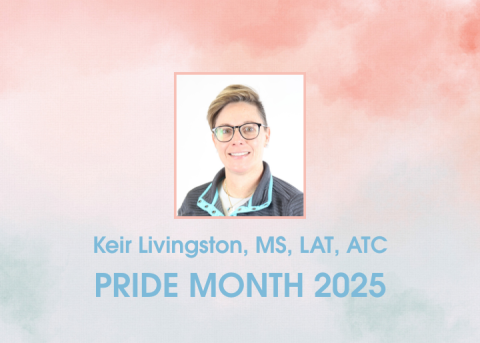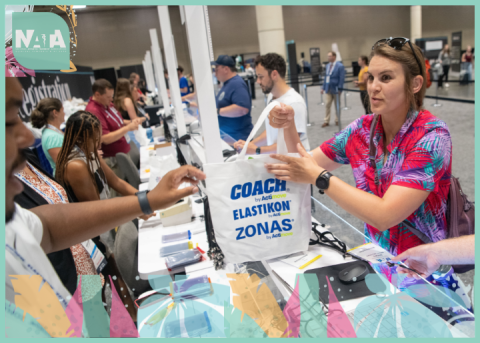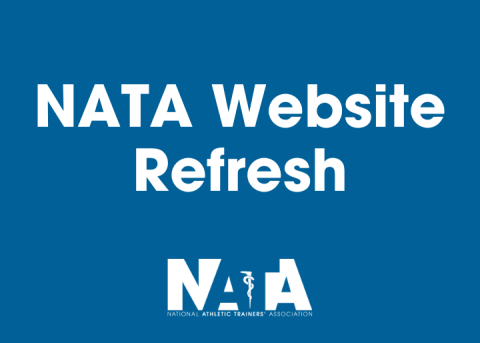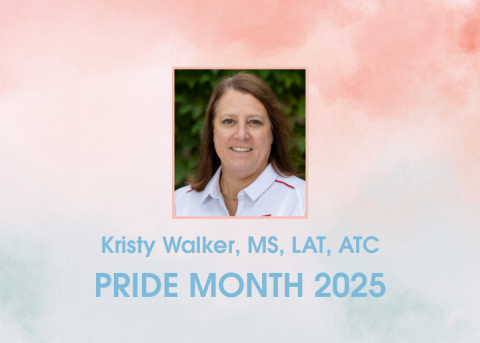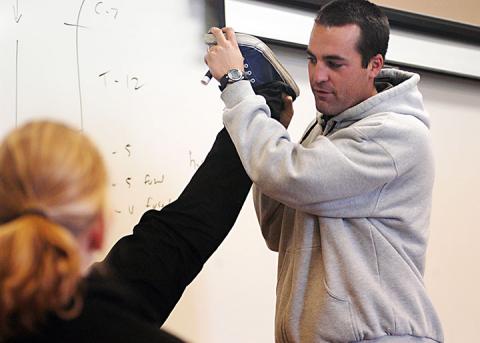
By Kembra Mathis, MEd, ATC
Have you heard the good news? NATA has approved the Secondary School Sports Medicine Course Outline, which can be used by any AT asked to start a sports medicine course!
These guidelines come in response to the recent Secondary School Athletic Trainers’ Committee survey that revealed a need as well as a desire for a useful outline that athletic trainers in the secondary school can use to guide their academic endeavors in schools. Well, here it is!
But now that it’s here, what does it do for you?
As it turns out, only 46 percent of states don’t actually have a stated-approved program in place. Many states already offer programs in everything from dental hygiene and EMT training to nursing and pharmacology. There is even one called a “pre-physical therapy” program. It only makes sense that we would want to stay ahead of the curve and make something acceptable available.
Career and technical education departments are building momentum in terms of producing sports medicine programs, which is good news because that means the program can be federally funded if they chose to add it. While this may vary state to state, many places have equipment and sometimes continuing education funded, based on fund availability. The school pays for the teacher, federal funding covers the rest.
Benefits of the Outline
- Saves time and prevents “recreating the wheel” in every state.
- State career and technical education departments may see more weight behind it since it is an approved NATA resource, possibly helping to speed the approval process along.
- This is written very similar to most currently established programs making them vicariously aligned.
- Readily available to all members at no cost on the NATA website.
- Establishes concepts that are safe and acceptable to teach, placing all ATs in the secondary school on the same page.
The Secondary School Sports Medicine Course Outline in Review
The outline is based on the application of knowledge concepts in an appropriate classroom setting. They do not, however, include implementation of skills application. This makes it a great companion to the NATA Proper Supervision of Secondary School Student Aides Official Statement.
Certainly, states that have already adopted a program might also be interested in using some of the outline’s components so they can be aligned with the national standard. Again, not a must, but highly suggested. This does not mean that states with an approved program should run out and change what they have. It is simply a resource to use if you so choose.
Most of the topics will feel pretty familiar to you, and will include, but are not limited to: historical perspectives; administrative perspectives; legal and ethical issues; nutrition, fitness and conditioning principles; environmental illnesses; anatomical overview; concepts in wrapping taping and bracing; psychological issues in athletes; sports injuries; and blood borne pathogens.
Because they are merely sample guidelines, you can just use what you need. Many state departments may have some existing rules to follow that will guide the choice of topics. You will also notice that there are enough topics that this could feasibly be stretched into two courses and arranged any way necessary.
How does this work?
If/when states decide to start a sports medicine course, they must come up with the curriculum then speak to experts in the field about starting such a course. Sounds simple, right? Well, maybe it’s not that simple, but it’s a start. The hardest part of this process is actually creating a program.
Having established guidelines cuts the work in half when it comes down to building courses, especially when it is often put together by people who are unfamiliar with the education system in general. Here are some steps one might consider:
- An athletic trainer/interested party approaches a school about creating a course locally. The school can approve and move forward and create the course locally as an elective. This is not state approved so there will be no funding.
- The interested party can approach either the state Career and Technical Education (CTE) Department or the Department of Education – they are separate entities in some cases – and propose the new program. About 76 percent of states with a sports medicine course program have housed it with CTE, making it federally funded. Only one state appears to have it listed under the Department of Education. There are three states that have evidence of courses, but it’s inconclusive as to where they are housed.
- Once the program is state approved, interested parties must follow their state procedures in terms of new course/program adoption. In many cases, if under CTE, it’s a program application process and then grant application once approved.
What’s the Catch?
It’s important to note that while these programs are gaining momentum, the states have total control over who teaches it. For example, if a CTE in a certain state wants the program, it can be created and then staffed with whomever they deem appropriate, which could be any health care professional or coach. This is not practical or desirable. It is up to athletic trainers in that state to work closely with these specific departments to help guide their decisions.
Many individuals and administrators working in education see the value of the program, but they may not be familiar enough with athletic trainers to limit who teaches it. That’s where we, the sports medicine professionals, come into play. It’s up to us to work with these agencies to help them understand our skillset, our education and what value we bring to the proposed program.
Conclusion
The Secondary School Sports Medicine Course Outline is coming at a pivotal point in our history and has the potential to educate a number of young people about the field of sports medicine and the role the athletic trainer plays in it. No, they won’t all become ATs, nor should they; however, if they learn that an athletic trainer is the best person to treat injury from physical activity, then we can begin to win the battle of awareness.
It is for this reason the outline is invaluable. We’ve tried for years to reach the mainstream public via media and service, which has produced some positive results. But there is no doubt that educating kids goes a long way into the future. I guestimated that in 10 years of educating young people, I have reached a minimum of 1,500 people in the classroom alone. This does not include the parents or siblings who became involved in helping them study or the friends they talk to. In a 25-year career, that could be more than 37,500 students who will walk out of my room knowing the difference between an athletic trainer and a personal trainer. That is more than the population of the town I currently live in.
The potential impact will run through their families, their friends and then, one day, their own children. Imagine a world where you no longer have to explain yourself or have that “elevator speech” prepared. Imagine the possible decrease in attrition in universities because more students know what they are getting into and are eager to begin the journey. I propose that programs like this may quite possibly help advice students about the requirements to get into the highly competitive athletic training master’s programs that are rapidly forming. This might, in turn, encourage students and provide the drive to do well in undergraduate studies so they’re better prepared when the time comes to consider graduate studies.
Yes, I know it’s a lot of hypotheticals in a world that prefers an evidence-based approach, but a little wishful thinking never hurt anyone!
Kembra Mathis, MEd, ATC, is the District Six representative of the NATA Secondary School Athletic Trainers’ Committee.

